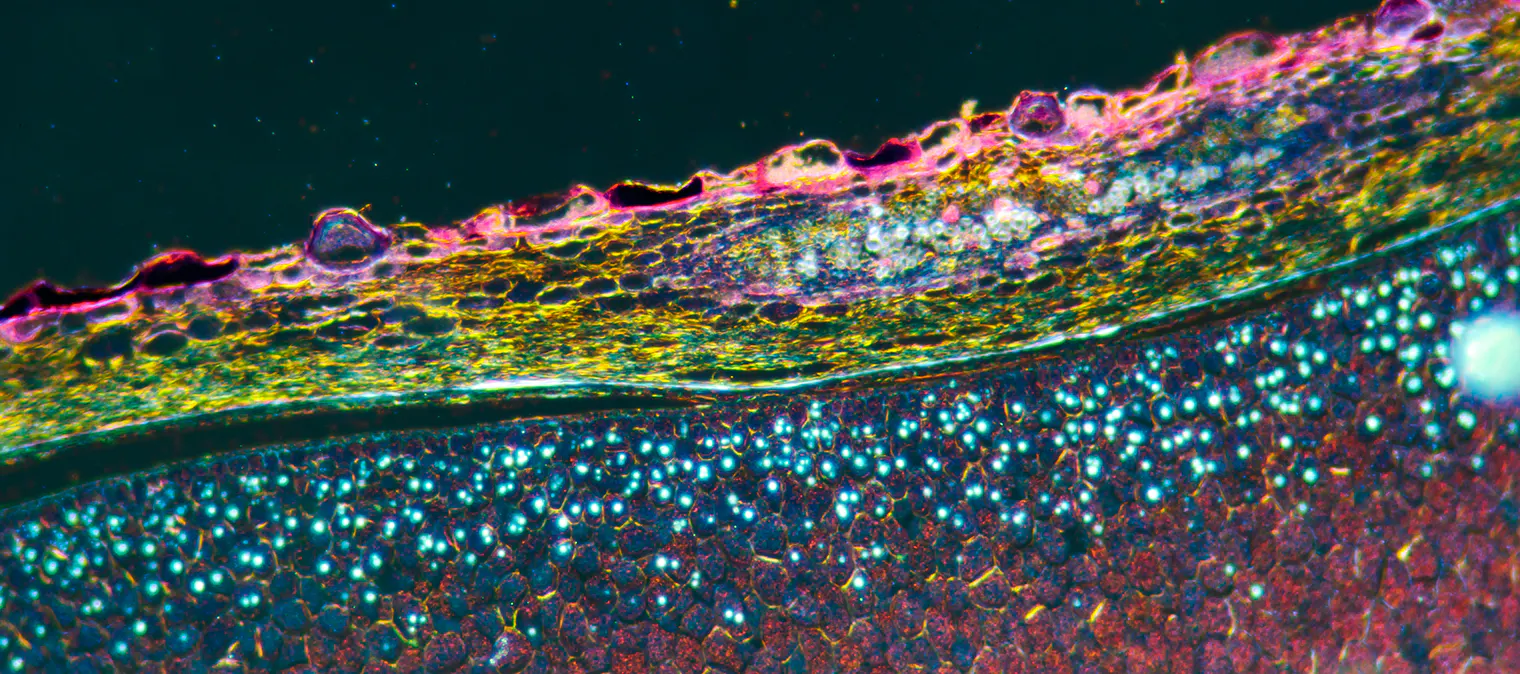
What is Cellular Health: How Your Health Depends on Your Cells

8 minute read
Good health is a large topic of conversation and has many different avenues that people take. Diet and exercise can vary significantly from person to person with dozens of different diets and types of exercise available. Some may believe the Mediterranean diet and yoga are the secrets to a long and healthy life while others may swear by keto and weightlifting.
While there are a seemingly limitless number of combinations, how these actions work boils down to how they affect your body at a cellular level.
While the ultimate goal of living a long, healthy, and happy life is shared by each method, they can lack an understanding of how they impact your body at a cellular level. Cellular health places an emphasis on the cells within your body and how you can support them.
Below is a look at the basic levels of organization in the human body as well as how focusing on cellular health can improve your overall wellbeing and health.
What are the levels of organization?
The human body is a biological wonder with trillions of cells working together to sustain life. Each cell within the body carries out a small job and when these small jobs are compounded by all the other cells you get a living human that can walk, talk, think, and live. With so many cells, it only makes sense to organize the human body in some capacity.
The most basic organization of the human body is into its components that increase in complexity and specificity as you go up the levels of organization. At its most basic you have a single cell, and at its most complex, you have an organ system that carries out a specific job.
Understanding the levels of organization of the human body can allow for a better understanding of ways that you can support your health.
Cells
Cells are the most basic unit of life. Every living thing must be made up of at least one cell for it to be classified as living. Eukaryotic cells are quite complex and contain many different structures known as organelles which aid in their survival. In the case of humans, you have about 30 trillion eukaryotic cells and many more organelles.
Cells can be specialized to carry out a wide variety of functions. Some cells like muscle cells can physically move while other cells like goblet cells in the digestive tract secrete mucus. While these cells have drastically different functions, they both need a steady supply of energy through the mitochondria and cellular respiration.
Tissues
Tissues represent several cells that come together. An example of tissue is muscle tissue. When in isolation a single muscle cell wouldn’t be very useful since it doesn’t have a usable amount of force. When many muscle cells come together, the amount of force generated by the muscle is more useful and can allow for bodily movement.
Organs
Organs are the next classification in which two or more tissues come together to carry out a specific function. In the case of muscles, skeletal muscle would be considered an organ. Nerves innervate muscle tissue and these muscle tissues are attached to the bones of the body. The interaction of two or more tissues is what makes an organ an organ.
The heart, lungs, kidneys, brain, and stomach are examples of organs. A key aspect of organs is that they play assistive roles in bodily functioning and in isolation they are not very useful. For instance, the heart would be useless without the accompanying blood vessels and blood.
Organ system
An organ system level of organization occurs when two or more organs work together to perform a bodily function. As an example, the heart works with the lungs, veins, and arteries to effectively deliver oxygen to all of the cells in the body. The digestive, immune, nervous, endocrine, and integumentary systems represent the major organ systems within the human body.
Organ systems are reliant on one another for optimal functioning so if the health of one organ system declines it will most likely impact other systems. As an example, high blood pressure can place strain on more than just your cardiovascular system and can cause issues with your kidneys, brain, and even your eyes.
How cellular health gets to the root of the problem
Organ systems are typically the focus of many health-promoting actions that people take. Exercising to lower blood pressure, eating well to decrease blood sugar, and working out to gain muscle mass are all examples of how health-promoting steps affect organ systems.
While focusing attention on the outwardly apparent signs of health through organ systems is helpful, taking a cellular approach to your health can ensure you are promoting your health from the bottom up and getting the absolute most out of your health and wellness.
Cells come in many different shapes, sizes, and types, but they all have similar basic functions and needs. Nearly all cells require DNA and a steady supply of energy through ATP to function. Knowing about these basic cellular functions and needs and supporting them can allow your body to function optimally at a cellular level which can allow you to be at your very best.
Mitochondria
The mitochondria are the powerhouse of the cell that is responsible for converting glucose into usable energy within the cell. Glucose is transported into the mitochondria where the organelle utilizes it in conjunction with oxygen to pump out adenosine triphosphate (ATP) in a process known as cellular respiration.
ATP is the usable form of energy within the cell and is required for cells to perform optimally. Protein synthesis, cellular growth, and many other cellular processes require ATP. Without the mitochondria, the cells within your body would be unable to meet their ATP requirements and would most likely perish.
While the mitochondria are well adapted to creating ATP, they can suffer from age and other external factors that reduce their efficiency. One of the byproducts of ATP production is reactive oxygen species (ROS). ROS can cause what is known as oxidative damage to surrounding molecules of structures within the cell.
Within the mitochondria, there is a high concentration of ROS that are produced through cellular respiration. In healthy mitochondria, the ROS are kept at bay through antioxidant molecules known as CoQ10 found within the membrane. Aging and other external factors can reduce the concentration of CoQ10 in the mitochondria leading to decreased mitochondrial efficiency.
DNA
DNA is the molecule found within your cells that provides an instruction manual for each and every cell within your body. The DNA holds the genetic code that provides the framework for how a cell develops as well as how it performs its function. Every protein, cell structure, and cellular process is a coordinated effort that owes its origins to the genetic code.
While DNA is a very detailed instruction manual, some factors can cause a typo or mistake within it. UV radiation and carcinogens can cause alterations to the genetic code and can cause dysfunction at a cellular level.
These typos are known as mutations and can accumulate over time. Minimizing mutations within your cell’s DNA is an important aspect of healthy aging and the prevention of age-associated illnesses.
How to support cellular health
When taking on your cellular health it can be difficult to know how to help your body on such a small scale. While you cannot physically single out a cell and give it every molecule it needs, you can do your best to improve the nutrients, molecules, and support your cells are receiving through health and wellness.
To help your mitochondria you can ensure it has all the tools it needs to succeed and operate optimally. Doing your best to improve glucose, oxygen, and CoQ10 levels allows your mitochondria to work at their greatest potential.
To help protect your DNA you can avoid carcinogens within your surroundings and can take extra precautions to protect your body from excessive UV exposure. Eating whole foods and a natural diet paired with wearing sunscreen is a great way you can help protect your DNA from mutation and potential problems.
External parts of the body like the skin need extra support as they are constantly being bombarded by external stressors that can lead to damage at a cellular level. Having a good skincare regime, taking skin support supplements, and applying a daily sunscreen is an effective way at maintaining your skin’s cellular health and youthful appearance.
https://spotrevolution.com/videos/cellular-nutrition-is-key/
Conclusion
Cellular health is a perspective of health that focuses on the unique needs your body has at a cellular level. Ensuring your body is supported at its most basic level can help with your overall wellbeing and ensure you are getting the most out of your health and wellness efforts.
Whether you are looking for more mental stamina, to build muscle, or simply live a healthy life the cellular health approach can ensure your body is getting the absolute most out of every health-promoting action you are taking.

Garlic Tomato White Wine Mussels

Viral Egg Flight




